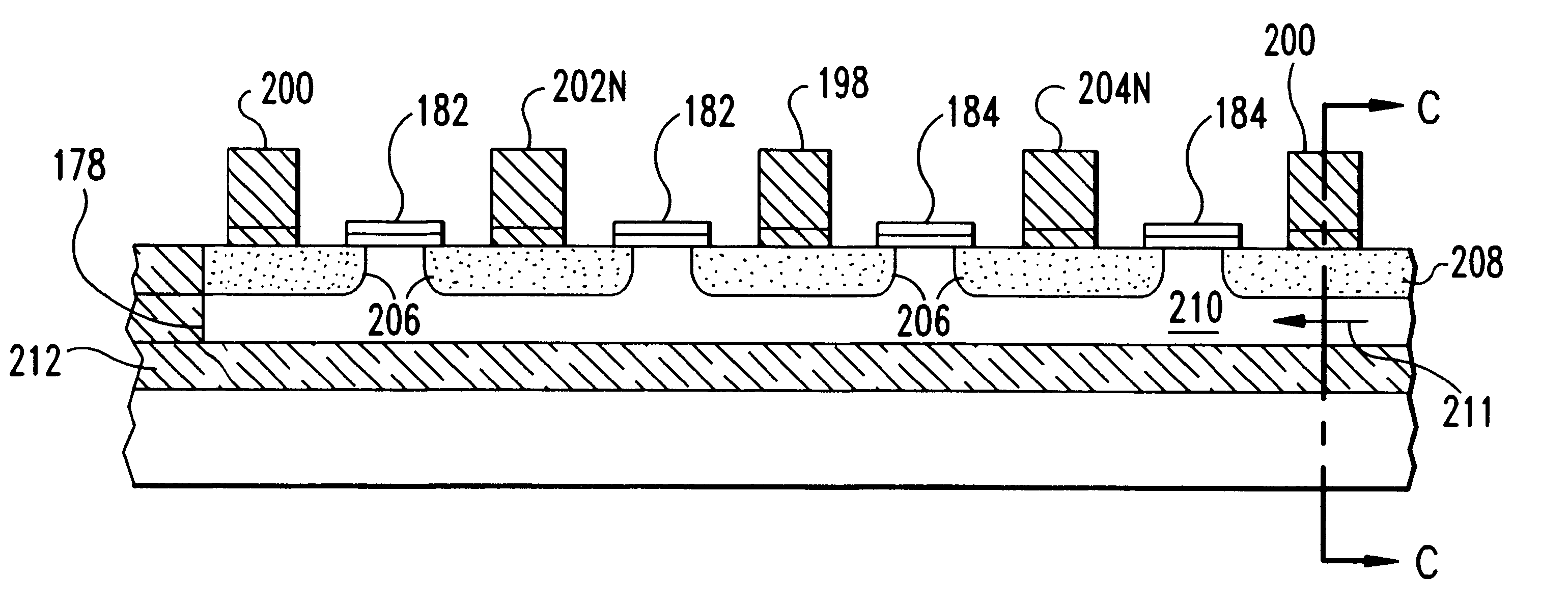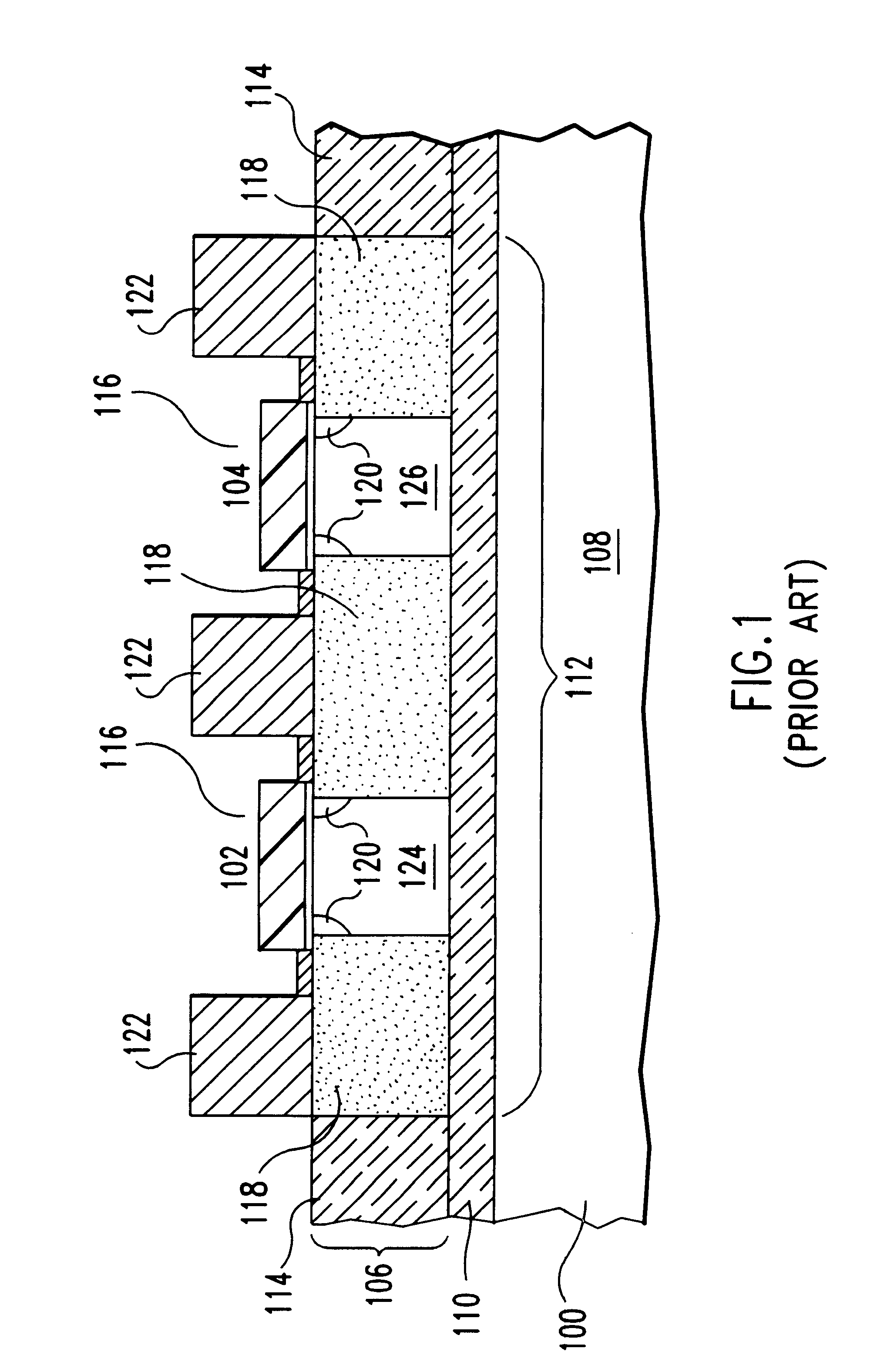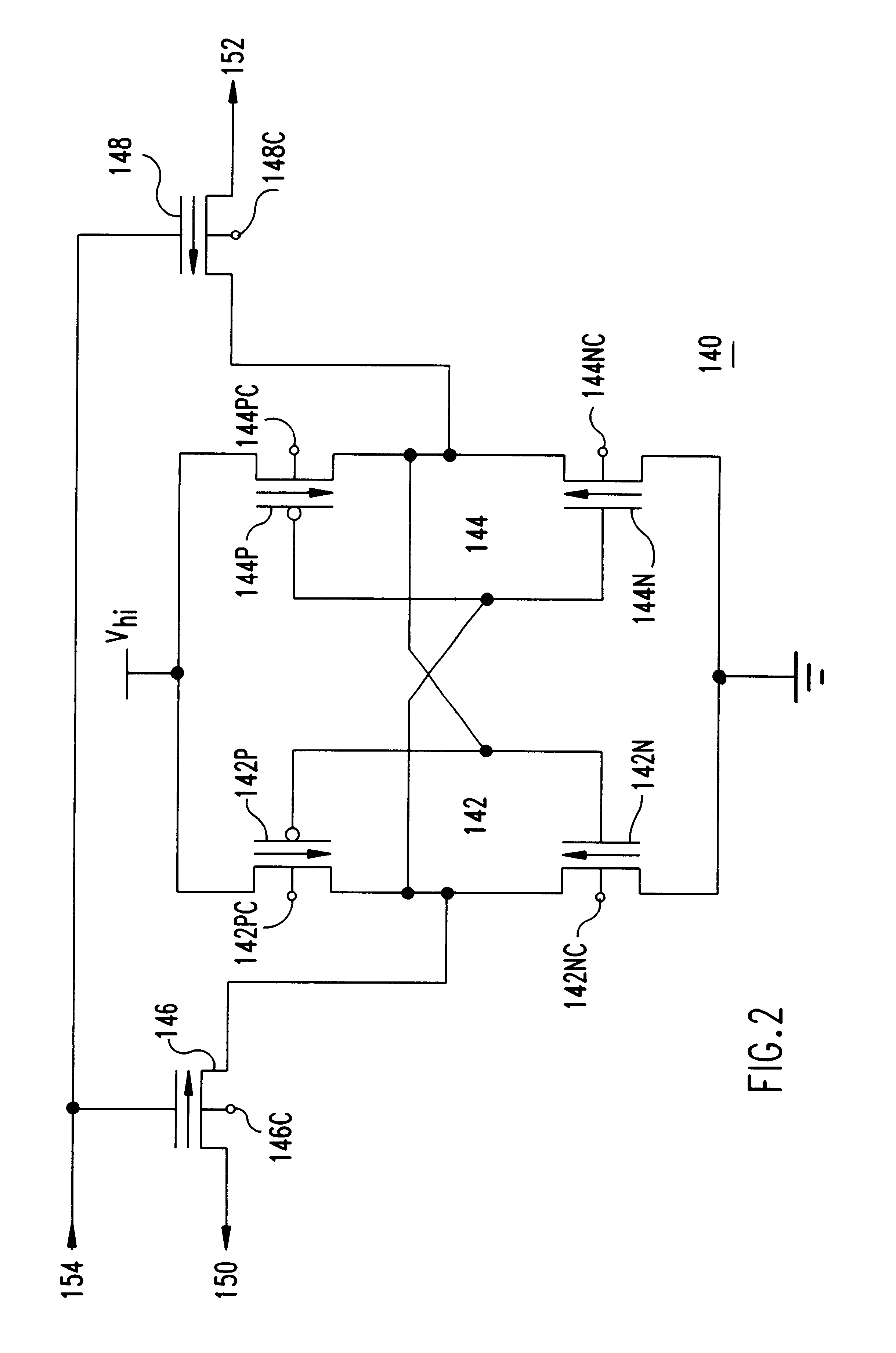Silicon on insulator field effect transistors having shared body contact
a technology of field effect transistors and insulators, which is applied in the field of silicon on insulator field effect transistors having shared body contact, very large scale integrated circuits, etc., can solve the problems of unintentionally inducing local body effects in some cell devices, sporadic read upsets without apparent reason, and serious design problems, so as to improve memory cell stability
- Summary
- Abstract
- Description
- Claims
- Application Information
AI Technical Summary
Benefits of technology
Problems solved by technology
Method used
Image
Examples
Embodiment Construction
Turning now to the drawings and, more particularly, FIG. 2 is a schematic of a typical CMOS Static RAM (SRAM) cell 140. The cell 140 is, essentially, an identical pair of cross coupled CMOS inverters 142, 144 and a pair of pass transistors 146, 148 between the cross coupled inverters 142, 144 and a pair of bit lines 150, 152. A word line 154 is tied to the gate of pass transistors 146, 148. Each CMOS inverter 142, 144 is, simply, an NFET 142N, 144N and a PFET 142P, 144P. The gate and drain of each PFET 142P, 144P is tied to the gate and drain of corresponding NFET 142N, 144N, respectively. The source of the PFETs 142P, 144P are connected to supply voltage (V.sub.hi) and the source of the NFETs 142N, 144N are connected to GND. The channel body for each FET 142N, 142P, 144N, 144P, 146 and 148 is represented by node 142NC, 142PC, 144NC, 144PC, 146C and 148C, respectively. The state of the cross coupled inverter pair 142, 144 determines the state of data stored in the cell 140.
Each SRAM...
PUM
 Login to View More
Login to View More Abstract
Description
Claims
Application Information
 Login to View More
Login to View More - R&D
- Intellectual Property
- Life Sciences
- Materials
- Tech Scout
- Unparalleled Data Quality
- Higher Quality Content
- 60% Fewer Hallucinations
Browse by: Latest US Patents, China's latest patents, Technical Efficacy Thesaurus, Application Domain, Technology Topic, Popular Technical Reports.
© 2025 PatSnap. All rights reserved.Legal|Privacy policy|Modern Slavery Act Transparency Statement|Sitemap|About US| Contact US: help@patsnap.com



